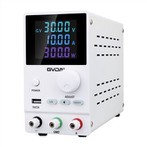Wavelength range and response time of two-color infrared thermometer
Wavelength range of two-color infrared thermometer
The emissivity and surface properties of the target material determine the spectral response, or wavelength, of the thermometer. For high reflectivity alloy materials, there is low or varying emissivity. In high-temperature areas, the best wavelength for measuring metallic materials is near-infrared, and 0.18-1.0μm wavelength can be used. Other temperature zones are available with 1.6μm, 2.2μm and 3.9μm wavelengths. Since some materials are transparent at certain wavelengths, infrared energy will penetrate these materials, and a special wavelength should be selected for this material. For example, when measuring the internal temperature of glass, use 10μm, 2.2μm and 3.9μm wavelengths (the glass to be measured must be very thick, otherwise it will be transmitted through); when measuring the internal temperature of glass, use 5.0μm wavelength; when measuring low temperatures, it is appropriate to use 8-14μm wavelength; and for example The wavelength of 3.43μm is used to measure polyethylene plastic film, and the wavelength of 4.3μm or 7.9μm is used for polyester. If the thickness exceeds 0.4mm, the wavelength of 8-14μm is selected; for example, the narrowband 4.24-4.3μm wavelength is used to measure C02 in the flame, the narrowband 4.64μm wavelength is used to measure C0 in the flame, and the 4.47μm wavelength is used to measure N02 in the flame.
Response time of two-color infrared thermometer
The response time indicates the reaction speed of the infrared thermometer to the measured temperature change. It is defined as the time required for the energy to reach 95% of the final reading (double-color colorimetric fiber only requires 5% energy). It is closely related to the photoelectric detector and signal processing circuit It is related to the time constant of the display system. The response time of the new infrared thermometer can reach 1ms. This is much faster than the contact temperature measurement method. If the target moves very fast or when measuring a rapidly heated target, a fast-response infrared thermometer should be used. Otherwise, sufficient signal response will not be achieved and the measurement accuracy will be reduced. However, not all applications require a fast-responding infrared thermometer. When there is thermal inertia for stationary or target thermal processes, the response time of the thermometer can be relaxed. Therefore, the choice of the response time of the infrared thermometer must be adapted to the conditions of the target being measured.






